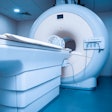
The U.S. Department of Justice (DOJ) has withdrawn a key guidance related to the Americans with Disabilities Act (ADA), endangering efforts to ensure that people with disabilities can access medical equipment such as imaging systems, according to an editorial published April 12 in the New England Journal of Medicine.
The action freezes endeavors to ensure that equipment such as exam tables, mammography units, and other diagnostic imaging devices are accessible to disabled patients, further putting them at risk of not receiving the care they need, wrote co-authors Dr. Lisa Iezzoni of Massachusetts General Hospital and Elizabeth Pendo, JD, from Saint Louis University School of Law.
"[Many] people with substantial movement difficulties cannot independently get onto high, fixed-height exam tables or imaging equipment -- and too frequently, providers don't assist them with transfers or positioning, preferring to examine them in their wheelchairs or not at all," they wrote. "These patients, therefore, often don't receive important screening and diagnostic evaluations."
Lack of support
Almost a quarter of U.S. adults have a disability, with mobility challenges such as walking or climbing stairs being the most common. Multiple factors contribute to inequities in the care that patients with mobility disabilities receive, but inaccessible medical equipment is becoming an increasingly common one, according to Iezzoni and Pendo.
Although the ADA requires that healthcare facilities and providers be accessible to people with disabilities, setting standards for fixed structures such as parking lots, entrances, and restrooms, it does not set standards for nonfixed equipment, including medical diagnostic equipment. As a result, guidance on the features of such equipment, including dimensions, height adjustability, and support positioning, has remained unclear.
In 2007, former Sen. Tom Harkin (D-IA) introduced the Promoting Wellness for Individuals With Disabilities Act, which included accessibility standards for medical diagnostic equipment; however, the bill was not passed. The 2010 Patient Protection and Affordable Care Act (ACA) also offered an opportunity to address the issue, with an amendment that would have required the U.S. Access Board and the U.S. Food and Drug Administration (FDA) to issue accessibility standards for medical equipment. In fact, the board published a final rule on the accessibility of medical diagnostic equipment in January 2017.
Before this rule could go into effect, however, the DOJ had to issue new ADA guidelines that would include this final rule and outline public and private healthcare settings where accessible medical diagnostic equipment is required. Instead, in December of last year -- in response to an executive order issued by President Donald Trump requiring federal agencies to identify regulations for repeal, replacement, or modification -- the DOJ rescinded guidance related to the ADA. The agency wrote that it would be "re-evaluating whether regulation of the accessibility of nonfixed equipment and furniture is necessary and appropriate," according to Iezzoni and Pendo.
Removing motivation
The DOJ's action removes key motivation to address the issue of medical equipment accessibility, the authors wrote. Although the growing number of people with mobility issues may pressure providers to respond, the issue really comes down to equity and the quality of healthcare for people with disabilities, Iezzoni and Pendo concluded.
"Increasing the availability of accessible medical diagnostic equipment will help reduce disparities and improve care for people who have been denied access to essential health services," they wrote. "[But] without impetus from the DOJ, healthcare providers may not make substantial changes to improve the accessibility of their medical diagnostic equipment."




















